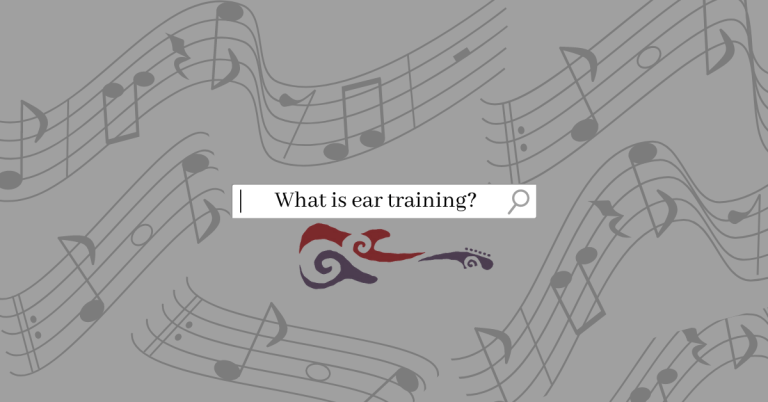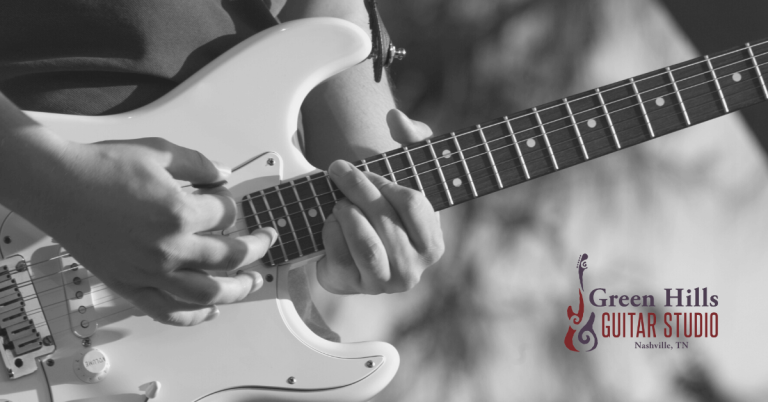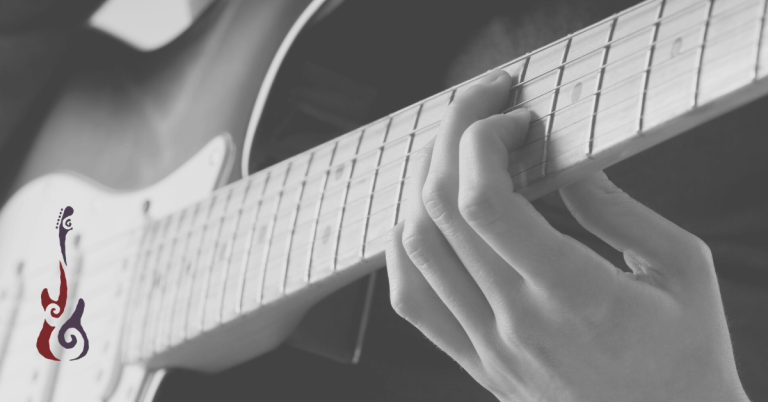Quick Change to the IV Chord: Why It Works in So Many Songs
The “quick change” to the four chord (IV) is a small shift that makes a big impact. Common in blues, gospel, rock, and soul, it happens early—usually in the second bar—and instantly adds movement and interest. It’s one of the most widely used tricks in music, from Robert Johnson to The Beatles. Whether you’re writing songs, improvising, or just trying to lock into a groove faster, this early shift to IV is a tool worth knowing. In this post, we’ll break down how it works, why it shows up in so many genres, and how to start using it in your own playing.
What Is a Quick Change in Music?
The quick change to the four chord—sometimes called a “quick IV”—is best known in blues music, especially in the 12-bar blues form. Instead of staying on the I chord for the first four bars, a variation adds a IV chord in the second measure before returning to I. This slight change creates motion, energy, and harmonic interest early in the progression.
While it’s a hallmark of blues, this trick pops up in rock, gospel, soul, jazz, and country too. It’s an early signal to the listener that something’s happening—something worth paying attention to.
Why Use a Quick Change to the IV Chord in Blues and Pop Music?
The quick change serves multiple functions:
- Adds motion early: Rather than lingering too long on the tonic (I), it creates movement in the second bar.
- Prevents stasis: Keeps the progression from sounding flat or repetitive.
- Supports phrasing: Especially in blues and gospel, the IV supports vocal or instrumental call-and-response.
- Sets up the cycle: It starts a harmonic loop early, reinforcing tension and release through I–IV–V–I.
How the IV Chord Functions in Common Progressions
The IV chord has a strong relationship with both the I and V chords:
- From I to IV: This quick shift introduces contrast while emphasizing a primary chord in the key.
- From IV to I: A common return that feels settled, reinforcing tonal identity.
- From IV to V: Creates a smooth transition, especially in turnarounds or gospel cadences.
In all cases, the IV functions as a subdominant, guiding the listener gently away from home and back again.
Tonal Center and Harmonic Implications
The quick change temporarily shifts the tonal weight away from the tonic, creating a floating sensation before the music “lands” again. This sense of departure and return enriches even the simplest progressions and supports the expressive qualities of blues, soul, and jazz phrasing.
Because the IV is less resolved than the tonic and doesn’t push as hard as the dominant chord, it creates openness—a space for phrasing, lyric emphasis, or soloing. In extended forms, it can even act as a pivot for modulation or modal interchange.
Examples of Songs That Use a Quick IV Change
1. Blues
- “Sweet Home Chicago” – Robert Johnson: A classic 12-bar blues with a quick change to IV in bar two.
- “Pride and Joy” – Stevie Ray Vaughan: Builds early momentum with a strong Texas blues groove and quick IV.
2. Soul / R&B
- “A Change Is Gonna Come” – Sam Cooke: Gospel-influenced harmonies with early IV movement for lift.
- “Sittin’ On The Dock of the Bay” – Otis Redding: Combines soul and pop with IV shifts that add subtle tension.
3. Jazz / Jazz Blues
- “Now’s the Time” – Charlie Parker: Blues head with a bebop twist, including a quick IV.
- “C-Jam Blues” – Duke Ellington: Simple yet often includes a quick IV in live settings.
4. Rock / Rock ‘n’ Roll
- “Rock and Roll” – Led Zeppelin: Blues-inspired, with a quick IV change right out of the gate.
- “Johnny B. Goode” – Chuck Berry: A rock and roll staple built on 12-bar blues with the early IV.
5. Country
- “Move It On Over” – Hank Williams: Deeply blues-influenced with a quick IV that drives the rhythm.
- “Tennessee Whiskey” – Chris Stapleton: Based on the same 12-bar blues structure as “I’d Rather Go Blind,” this modern country-soul ballad includes a quick move to the IV chord in bar two, giving it that bluesy, flowing momentum.
6. Gospel
- “Lean On Me” – Bill Withers: Uses early IV movement to mirror the song’s message of support.
- “Take My Hand, Precious Lord” — Mahalia Jackson: The song has been performed in various arrangements, and many versions include a quick IV in the second bar, enhancing its emotional rise and gospel phrasing.
Beatles Songs Featuring or Approaching Quick IV Usage
The Beatles were rooted in blues and rock traditions and often pulled from 12-bar forms. Here are a few tunes where the quick IV shows up or is implied:
- “Can’t Buy Me Love”: Uses a 12-bar blues structure with a quick change to IV in bar two.
- “You Can’t Do That”: Bluesy groove in G major, early IV movement.
- “Birthday”: Raw, riff-driven, with early IV use.
- “One After 909”: Classic I–IV–V cycles with quick IV turns.
- “Get Back”: Loosely structured, but IV appears early and often.
Advanced Application: The IV of V Chord Movement
What if you go one step further and use the IV of the V chord? In the key of C, the V chord is G. The IV of G is C—so in this case, it may feel like you’re back at the tonic. But if you treat G as a temporary key, then moving to its IV (C) briefly tonicizes the V.
Why this works:
- It creates motion within motion—a feeling of pivoting mid-phrase.
- It’s especially expressive in gospel, jazz, and rock ballads.
- It allows modulation or adds tonal color before a return to the original key.
Examples of IV of V in Action:
- “My Sweet Lord” – George Harrison: Gospel-inspired harmonic movement includes a clear IV of V moment, especially during the key changes that elevate the chorus.
- “Let It Be” – The Beatles: Some arrangements subtly tonicize the V chord, with motion that implies a IV of V to add spiritual depth to the harmony.
- “I Want You Back” – The Jackson 5: Features dense, gospel-flavored harmonic cycles—listen for movement between dominant and subdominant functions that outline a IV of V relationship.
- “You Can’t Always Get What You Want” – The Rolling Stones: Incorporates gospel-influenced chord shifts, including movement from the dominant to its own IV, adding emotional lift and harmonic interest.
- “Shine a Light” – The Rolling Stones: Built on gospel-style progressions, including passing motion from the dominant to its IV to enrich the resolution.
- “People Get Ready” – Curtis Mayfield: Uses soulful harmonic phrasing where IV of V motion deepens the song’s spiritual tone.
- “Oh Happy Day” – Edwin Hawkins Singers: Gospel classic that features clear IV of V movement to temporarily tonicize the dominant and build toward emotional high points.
- “Lean on Me” – Bill Withers: While subtle, the song’s harmonic structure includes moments where the IV of the V is implied to reinforce the dominant before resolving.
- Jazz Turnarounds: In standards like “All the Things You Are,” secondary dominants and their IV chords (IV of V, IV of ii, etc.) are used to shift between tonal centers smoothly.
- Traditional Gospel Progressions: Many gospel arrangements use IV of V to tonicize the dominant, especially before big choruses or refrains—adding weight and emotional resonance.
The Coda
The quick change to the four chord is one of those deceptively simple moves that shows up everywhere once you know to listen for it. It creates motion, supports phrasing, and gives your progressions a lift right from the start. Whether you’re working in a blues format or just looking to spice up your harmonic vocabulary, the quick IV can bring your playing to life.
Want to get it under your fingers fast?
👉 Check out our Grab a Fast 4 Chord course — a deep dive into making smooth and confident chord transitions using shapes, triads, and real-world examples.
Or, book a lesson with one of our guitar instructors in Nashville or online and start applying these techniques to your playing right away.






